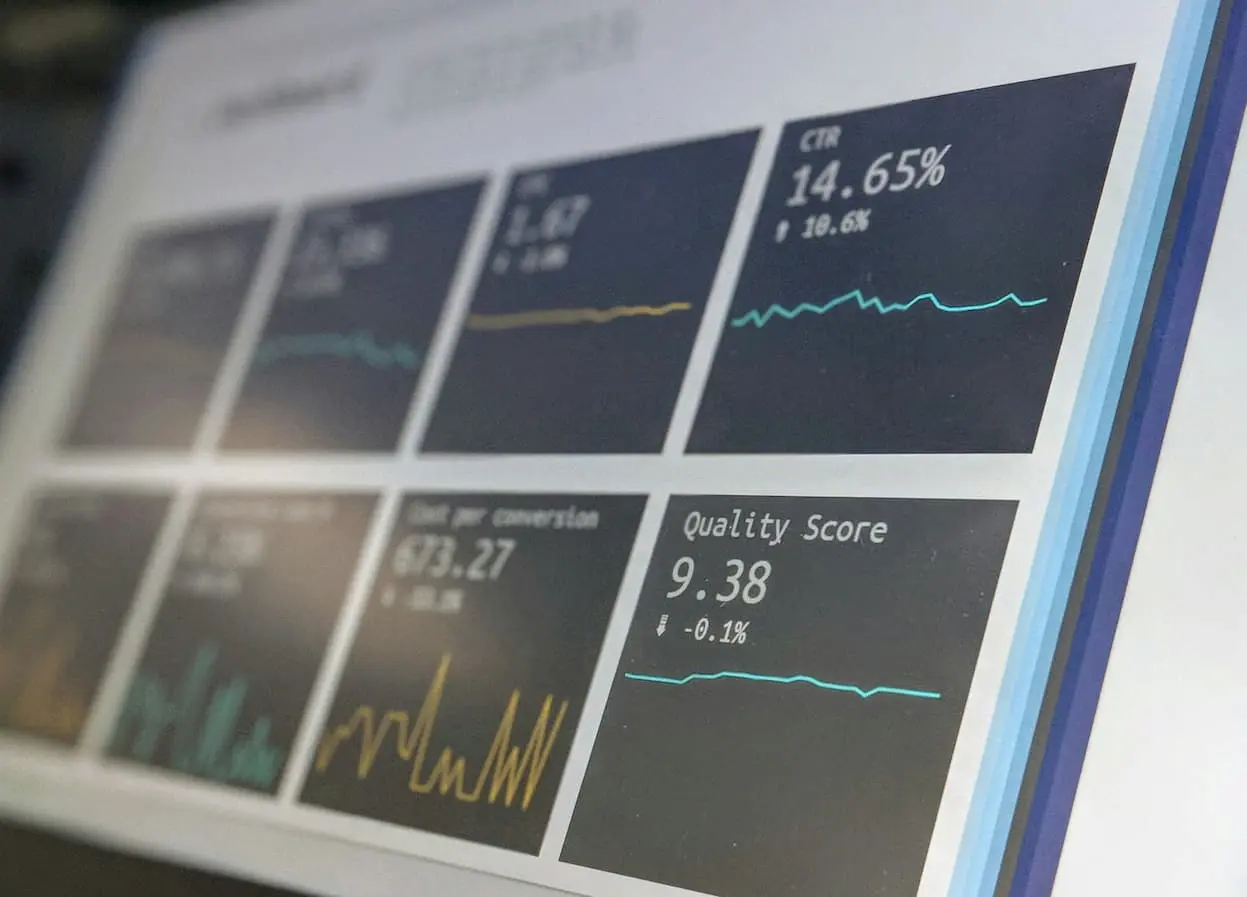Affiliate Marketing Analytic Tools That Maximize ROI

Introduction
Having affiliate links alone does not ensure success in affiliate marketing. A common misconception among novices is that placing affiliate links everywhere will lead to instant revenue. However, this is not always the case. Affiliate marketers who consistently assess, analyze, and optimize their programs are more effective than those who only post links.
What sets top earners apart is their capacity to track performance, identify what’s effective, and make data-driven adjustments. You risk squandering time and money on efforts that yield little to no return if you don’t track and analyze them properly.
You must have the appropriate analytics tools to optimize your ROI (Return on Investment). These technologies provide accurate information on your audience, traffic sources, conversion rates, and overall campaign performance. You can spend more on productive methods, make better judgments, and stop what isn’t working if you have the correct data at your disposal.
This post will examine the top affiliate marketing analytics tools available for efficiently tracking, enhancing, and growing your affiliate company.
1. Google Analytics – Understanding Visitor Behavior
Google Analytics is the industry standard for tracking the performance of websites. The best thing is that it’s free, making it one of the most important tools for affiliate marketers.
You may learn more about how people find your website, what they do once they get there, and how long they remain by using Google Analytics. Because it indicates which material is receiving the most attention and which areas require development, this information is essential.
You may track particular behaviors, such as clicks on your affiliate links, sign-ups, or sales, by setting up Goal Tracking. For instance, you may monitor the precise number of people who click on the affiliate link in a product-promoting blog article.
Conversion tracking is an additional potent function. This lets you observe what proportion of visitors finish a specified action, like using your affiliate link to make a purchase. While low conversion rates suggest there is a need for adjustment, high rates frequently imply your targeting and content are spot on.
Additionally, Google Analytics offers traffic source analytics that display the origins of your visitors, including paid advertisements, social media, email marketing, and organic search. Because it allows you to concentrate on the channels that yield the best return on investment, this data is quite helpful. For example, you may improve traffic from organic search by doubling your focus on SEO if the majority of your affiliate sales originate from that source.
Additionally, behavior flow reports let you examine how users navigate your website. This makes it easier to determine where they leave, which enables you to enhance navigation and prolong visitor engagement. Their likelihood of clicking on your affiliate links and converting increases with their level of engagement.
In summary, Google Analytics helps you make smarter marketing decisions by helping you understand the path of your audience, not simply numbers. Gaining proficiency with this tool is essential if you want to optimize return on investment, regardless of your level of affiliate marketing experience.
2. Google Search Console – Monitoring SEO performance
Google Search Console (GSC) focuses exclusively on how your site appears in Google Search, whereas Google Analytics provides you with a thorough view of visitor behavior on your website. Since the majority of affiliate sales begin with a Google search, this is quite helpful for affiliate marketers.
How It Operates
The precise terms users use to find your content are displayed to you by Google Search Console. The average position for each keyword, your CTR (Click-Through Rate), and the quantity of impressions—the number of times your website shows up in search results for that term—are also displayed.
Let’s say you own an affiliate website devoted to fitness gear. GSC may show that, despite having a CTR of barely 1%, your post on the “best adjustable dumbbells” is ranked in position 8. This indicates that although your website appears in search results, not enough people are clicking on it. Without affecting your rating, you may use this information to improve your meta title and description and increase your click-through rate.
Identifying Keywords with High Conversion
Not all traffic is created equal. While some phrases attract visitors who are merely perusing, others attract purchasers who are prepared to make a purchase. You can concentrate on keywords that have a high conversion rate—those that draw in visitors who are eager to take action—by using GSC data. For instance, “buy running shoes online” has a higher conversion rate than “running shoe types.”
You can increase traffic and affiliate sales by using this data to inform future content creation that targets those high-intent keywords.
Tracking Technical SEO Problems
Additionally, Google Search Console notifies you of technical SEO concerns such as slow-loading sites, indexing failures, or mobile usability problems. No matter how excellent your content is, you will have trouble ranking if Google is unable to properly crawl and index your website.
Resolving these problems as soon as possible is essential for affiliate marketers because poor indexing or outages might result in missed commissions.
Performance in the Long Run
Monitoring your SEO performance patterns over weeks, months, or even years is an additional advantage. This lets you check if your optimization efforts are yielding results and if your rankings for key affiliate pages are rising or falling.

3. Dashboards for Affiliate Networks: Direct Sales Information
Although Google Analytics and Google Search Console concentrate on traffic and user behavior, they do not provide you with a precise indication of the revenue generated by each affiliate link. Affiliate Network Dashboards can help with that.
You will have access to a dashboard that monitors the following if you work with networks like ShareASale, CJ Affiliate, Impact, or Rakuten Advertising:
- Clicks on your affiliate links
- Conversions (sales, sign-ups, or other actions)
- Commission received per transaction
- Conversion rates for each campaign or product
The Significance of This Data
Assume you have two blog entries: one on the “Best Espresso Machines” and one on the “Best Coffee Makers.” The espresso piece receives fewer clicks, but it converts at a far greater rate and generates a higher commission per sale, according to your affiliate dashboard. For the best return on investment, this indicates where to concentrate your marketing efforts.
You may make the connection by merging Google Analytics data with affiliate dashboard data:
- Which sources of traffic result in the most lucrative clicks?
- Where should additional time and resources be allocated for scaling?
- Which pages or keywords yield the highest commission?
The ShareASale Dashboard is one example.
You may see comprehensive data in ShareASale that highlights:
- Top-converting merchants (so you can promote them more)
- Items with the maximum earnings per click (EPC)
- Trends in performance over time (to identify seasonal surges)
CJ Affiliate Dashboard, for instance
With the help of CJ Affiliate’s comprehensive insights regarding device type performance, you can determine whether your audience is making more purchases on desktops or mobile devices. You might need to make your landing pages mobile-friendly if your mobile conversion rate is low.
Monitoring Several Campaigns
It can be very difficult for affiliate marketers who operate with multiple networks to keep track of all these dashboards. For this reason, some experts employ reporting tools or affiliate monitoring aggregators that compile information from several networks into a single dashboard. AffJet, AnyTrack, and Voluum are a few examples.
With the help of these aggregators, you can:
- Evaluate campaign success across networks
- Determine which campaigns yield the biggest return on investment
- Track underperforming offers in real time.
Integrating Affiliate Dashboards with Google Tools
When you integrate information from Affiliate Network Dashboards, Google Analytics, and Google Search Console, the true magic happens.
For instance:
- According to Google Search Console, your page that targets the high-intent term “Best Budget Laptops” is ranked fourth.
- According to Google Analytics, organic searches account for the majority of this page’s traffic, which remains on it for more than three minutes.
- Affiliate System According to dashboard data, this page earns $500 in commissions every month and converts at a rate of 5%.
You can tell that this page is a valuable asset based on these findings. Now, you can:
- Update it frequently to keep rankings high.
- Increase the number of internal links that point to it.
- Try a variety of affiliate offers to see if profits rise.
Important Takeaways for Optimizing ROI:
- Use GSC to address technical SEO problems that could lower rankings and concentrate on high-intent keywords.
- For the most precise sales and conversion information, rely on affiliate dashboards.
- Integrate analytics sources to get a comprehensive view of earnings, engagement, and traffic.
- Examine your statistics frequently so that you may modify your promotional tactics and content in light of performance patterns.
Aligning search performance data with sales data allows you to make data-driven decisions that can significantly boost your affiliate revenue rather than relying solely on guesswork.
4. ThirstyAffiliates & Pretty Links: Link Monitoring & Administration
Your links are your lifeblood when it comes to affiliate marketing. Effectively managing those links is essential since each click has the potential to result in a commission.
ThirstyAffiliates and Pretty Links can help with this.
The purpose of both WordPress plugins is to support affiliate marketers:
- Condense lengthy, unsightly affiliate URLs into neat, branded connections.
Monitor each link’s click performance and arrange affiliate links for simpler administration.
The Significance of Link Management
Assume that the merchant modifies their affiliate link while you are advertising a product. You would have to manually update each instance of that link throughout your website, which may consist of dozens or even hundreds of pages, if you didn’t have a link management system. You can refresh the link once with ThirstyAffiliates and Pretty Links, And the shift is universal.
Additionally, you can quickly replace the connection with a new retailer if a merchant discontinues their affiliate program.
Beautiful Links: Streamlined and Identified URLs
You can use a lengthy, disorganized affiliate URL, such as Arduino CopyEdit: with Pretty Links. and make it look like this: https://yourdomain.com/go/summer-sale Arduino CopyEdit
In addition to giving the link a more polished appearance, this can increase click-through rates because consumers are more inclined to click on links that look trustworthy and clean.
Personalized slugs (you can modify the URL text) and click-through link tracking are two of Pretty Links’ primary features.
Link grouping and tagging for improved organizing; sponsored tags and no-follow options for SEO compliance
ThirstyAffiliates: Complete Link Administration System
Pretty Links is straightforward and efficient, but ThirstyAffiliates incorporates more sophisticated affiliate marketing tools to go one step further:
Cloaking links to prevent commissions from being stolen
• Link health checker to notify you if an affiliate link malfunctions
- Geolocation targeting, which directs users to offers relevant to a given country
- Category organization to separate links by niche or campaign
Global affiliate marketers will particularly benefit from this final feature.
To increase your chances of receiving a commission, ThirstyAffiliates can, for instance, automatically reroute users who click on your Amazon affiliate link from the UK to the UK Amazon store rather than the US store.
Monitoring Performance
Both programs offer reports that display the number of clicks on each link, their origins, and the times at which they happen. You may determine your best-performing affiliate offers and eliminate or swap out underperforming links by examining this data.
- For increased visibility, arrange your material optimally.
When to Use Every Tool
ThirstyAffiliates is the best option if you want sophisticated capabilities like geotargeting, link health checks, and a comprehensive link management system; Pretty Links is excellent if you want a basic tracking system and a clean, branded appearance.

5. Advanced Affiliate Tracking with Voluum
For managing links on your website, Pretty Links and ThirstyAffiliates are great, but Voluum is a whole new level of affiliate tracking.
For marketers who are running numerous campaigns across various channels, including Google Ads, Facebook, native ads, email campaigns, and more, Voluum is a top-tier affiliate monitoring tool.
The Reasons Voluum Is Unique
Voluum tracks every step of the process, from the time an ad is clicked until the final conversion, rather than just clicks. This provides you with a profound understanding of:
- Which traffic sources yield the highest revenue?
- The real-time performance of various advertisements or landing sites
- Which devices, browsers, or geolocations convert the best?
Knowing which ads are worth growing and which ones are a waste of money is essential for affiliate marketers conducting paid campaigns.
Essential Elements of Voluum
- Tracking in real time
You can make quick judgments thanks to Voluum’s real-time reporting. You can halt a campaign right away if it isn’t working well to avoid losing further money.
- Comparative Analysis
To determine the best-performing combination, you can split-test various landing pages, offers, or ad creatives.
- Integration of Traffic Sources
Major ad networks can be automatically integrated with Voluum, enabling conversion tracking and cost updates without the need for manual uploads.
- Device targeting and geolocation
By country, location, city, device type, or operating system, you may identify the precise source of your conversions. This enables you to customize campaigns for particular target audiences.
- Identification of Bots
One major issue in affiliate marketing is click fraud. To ensure that your reports show accurate information, Voluum identifies and eliminates questionable clicks and human traffic.
A Voluum Example in Action
Assume you are in charge of a Facebook Ads campaign that promotes an expensive fitness item. Using Voluum, you may find that:
- Canadian desktop traffic has a 5% conversion rate.
- US mobile traffic converts at a rate of 2%.
- Some ad placement traffic has a high click-through rate but no conversions.
Using this data, you could:
- Raise your spending on Canadian desktop traffic;
- Cut back on or remove advertisements from poor placements;
- Modify your landing page for mobile users to boost conversions.
Voluum in Combination with Other Instruments
When combined with affiliate dashboards and Google Analytics, Voluum provides you with a comprehensive 360-degree view of your campaigns:
- GSC provides information about your site’s search engine ranking.
- ThirstyAffiliates and Pretty Links manage and keep an eye on your links.
- Voluum provides you with real-time paid campaign performance data.
This combination guarantees that your paid and organic affiliate programs are optimized for optimal return on investment.
Important Takeaways
- Pretty Links & ThirstyAffiliates saves you time and increases click-through rates by managing and tracking affiliate links in your content.
- For dedicated marketers managing multi-channel campaigns who require precise, real-time performance monitoring, Volume is a powerful tool.
- When you combine these technologies, you can make data-driven decisions more quickly, which boosts revenue and cuts down on wasted labor.
6. Keyword and Competitor Analysis using SEMrush & Ahrefs
Selecting the appropriate keywords in affiliate marketing might mean the difference between a successful campaign and a futile one. In actuality, you’re marketing in the dark if you don’t conduct competitive and keyword research. Ahrefs and SEMrush excel in this situation. These are powerful SEO tools that assist affiliate marketers in tracking rankings over time, snooping on rivals, and finding lucrative keywords.
The Significance of Keyword Research for Affiliates
Targeting search keywords with strong customer intent (such as “best running shoes for women” rather than “running shoes”) is frequently the key to success in affiliate marketing.
- Reduce competition so that your chances of ranking are reasonable.
- A respectable search volume (enough traffic to justify the effort)
Instead of relying on guesswork, SEMrush and Ahrefs let you locate these keywords in a methodical manner.
The Benefits of SEMrush
With just one seed phrase, you may get hundreds of keyword ideas with SEMrush’s extensive Keyword Magic Tool.
- Search volume,
- keyword difficulty,
- CPC (cost per click) for sponsored campaigns,
- SERP features (such as featured snippets, reviews, etc.) are some ways to filter results.
This enables affiliate marketers to swiftly determine the keywords that prospective customers use just before making a purchase.
Additionally, SEMrush offers
- position tracking to follow your keyword ranks over time,
- content gap analysis to identify phrases that your rivals rank for but you don’t,
- competitor backlink research to identify chances for link-building.
How Well Ahrefs Performs
Ahrefs is renowned for having one of the most precise backlink databases, but it’s also quite strong for competition analysis and keyword research.
Important characteristics for affiliates:
- Site Explorer: Find out which pages on a competitor’s website receive the most organic traffic and which keywords they rank for
- Content Explorer : find the most shared and linked-to content in your niche
- Keyword Explorer : examine keyword difficulty, click metrics, and search volume
- Rank Tracker : monitor your ranking progress .
The ability to display estimated traffic value—which indicates the potential value of a keyword if you rank for it—is one of Ahrefs’ strongest points.
Analyzing Competitors in Practice
Suppose you have a home fitness blog. With Ahrefs or SEMrush, you could:
- Determine which affiliate websites in your niche rank highest.
- Examine their most lucrative pages.
- Take note of the terms that drive the most traffic to them.
- Produce more valuable and better-optimized content that targets the same keywords.
By doing this, you’re reproducing tried-and-true tactics rather than speculating about what could work.
Which One Is Best to Use ?
- SEMrush is an improved all-in-one marketing package that works well for SEO, PPC, and social media tracking.
- When it comes to backlink analysis and identifying high-value keywords with accurate click statistics, Ahrefs is unmatched.
A lot of seasoned affiliate marketers combine the two to gain a total edge.
7. Linking Up Your Data Sources
Data Studio may be integrated with Google Sheets to upload custom campaign data, Google Analytics to view traffic trends and user activity, Google Search Console to track the performance of organic keywords, and Affiliate Network exports to track sales and commissions.
You may create a comprehensive picture of your affiliate business by integrating these.
An Example of an Affiliate Use Case
Let’s say you wish to monitor the performance of a new product review page. You may create a dashboard in Data Studio that displays:
- The page’s organic traffic (from Search Console)
- clicks on affiliate links (from ThirstyAffiliates data or Pretty Links)
- Commissions and sales (from your affiliate network)
Having everything in one location allows you to promptly respond to inquiries such as:
- Which keywords generate the highest conversion rates?
- Is the page’s rating becoming better over time?
- What is the return on investment for this particular piece of content?
Putting Reports to Use
Making charts action-oriented is just as important to excellent reporting as having them.
For instance:
- Invest in SEO or buy traffic if conversions are high but traffic is low.
- If traffic is high but conversions are low, try experimenting with alternative affiliate offers or optimizing your calls to action.
- Reduce spending or change your focus if a particular traffic source isn’t performing up to par.
Real-time data filtering in Google Data Studio enables quick scenario testing.
Advice for Making the Most of Google Data Studio
- Maintain dashboard simplicity: An excessive number of metrics may result in information overload.
- Pay attention to KPIs: Monitor just the things that generate income (traffic, CTR, conversions, and earnings).
- Automate updates: To eliminate the need for manual report refreshes, connect real-time data sources.
- Segment data: To identify areas for growth, organize results by location, device, or channel.
The Strength of Combining Instruments
You get the best of both worlds when you use Google Data Studio in conjunction with SEMrush or Ahrefs:
1. Ahrefs and SEMrush assist you in determining what to target.
2. You may assess the effectiveness of your targeting plan with Google Data Studio.
In this manner, rather than relying just on conjecture, you can continuously improve your campaigns using actual performance data.
Advice for Increasing Affiliate Marketing ROI
Making more informed decisions based on data is the key to maximizing your return on investment (ROI) as an affiliate marketer. Even more important than having the appropriate analytics tools is how you use the data. These useful pointers can help you maximize your return on investment.
1. Examine Your Data Every Week
Allowing performance reports to accumulate without routinely evaluating them is one of the most frequent errors made by affiliate marketers. You may identify possibilities and issues early on by reviewing your data at least once per week. For instance, you may observe that a new product review is beginning to gather traction or that hits from a particular traffic source have suddenly decreased. Weekly reviews help you stay flexible and enable you to react fast before trends shift.
2. Conduct A/B Tests to Find the Most Effective
The quickest way to improve results is through testing. Whether you’re rewriting a product headline, rearranging affiliate links on a page, or changing the color of your call-to-action button, A/B testing reveals which version generates the most hits and conversions. This procedure is made easy by several analytics tools, such as Google Optimize and Voluum, which divide your audience and monitor performance for each version.
3. Quickly discontinue underperforming campaigns
Not every campaign will be successful, and it is a waste of time and money to hang on to underperforming campaigns. Cut a campaign and redirect resources to something that is currently successful if, after a fair amount of testing, it isn’t fulfilling your goals. Instead of lowering your averages with pointless endeavors, this “fail fast” mentality aids in maintaining a favorable return on investment.
4. Pay Attention to Links and Pages with High Revenue
Most affiliate marketing setups follow the 80/20 rule, which states that a small number of important pages or links produce the majority of the earnings. Find the material that is performing the best using your analytics, then focus even more on it. This could entail optimizing certain pages for search engines, directing paid traffic to them, or adding more relevant content. The stronger your top earners are, the quicker your total return on investment will increase.
In conclusion
Affiliate marketing is a game of numbers, and the people who know their statistics the best win. By tracking, measuring, and refining your campaigns with analytics tools, you eliminate uncertainty from your decision-making process. This guarantees that all of your time and marketing funds are allocated to the most important areas.
Accurate tracking and actionable analytics make your marketing tactics more effective and focused by default. In the long run, this not only increases your return on investment but also provides you with a resilient competitive advantage in the dynamic affiliate marketing market. Continue testing, keep improving, and always allow your data to inform your next course of action.
IF you interest more information visit this POSTS













